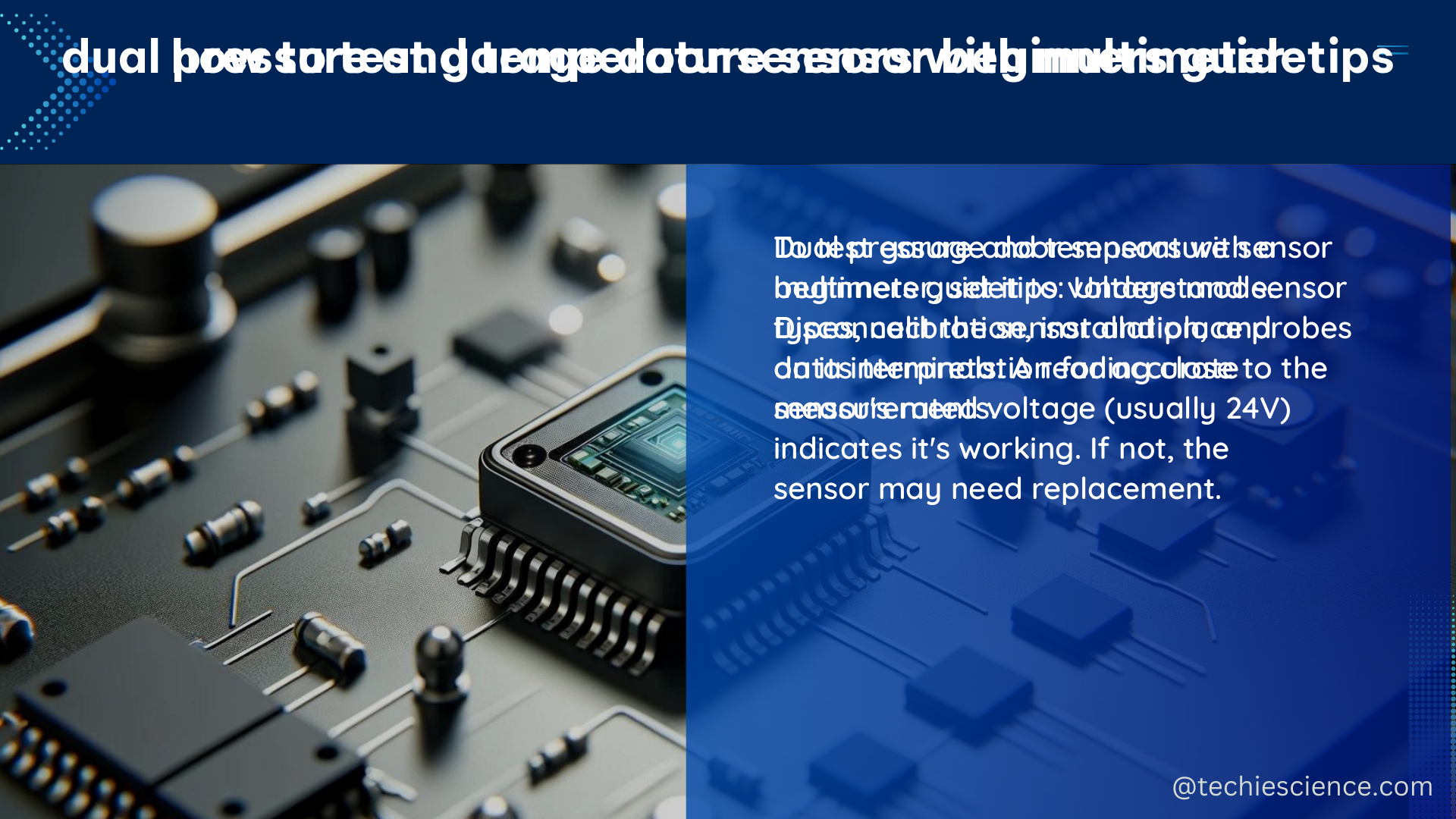A dual pressure and temperature sensor is a versatile device that measures both pressure and temperature simultaneously, making it a crucial component in various applications, including HVAC systems, industrial processes, and automotive engineering. For beginners, understanding the technical specifications and the principles of operation of these sensors is essential to ensure accurate measurements and reliable performance.
Technical Specifications of Dual Pressure and Temperature Sensors
Pressure Range
Dual pressure and temperature sensors have a wide pressure range, typically from a few millibars (mb) to several hundred bars (bar). The specific pressure range depends on the application and the sensor model. For example, a sensor designed for HVAC applications may have a pressure range of 0-100 mb, while an industrial sensor used in high-pressure processes may have a range of 0-500 bar.
Temperature Range
The temperature range of dual pressure and temperature sensors is also wide, typically from -40°C to +125°C or more. The specific temperature range depends on the application and the sensor model. Some sensors may be designed for cryogenic applications with a range of -196°C to +50°C, while others may be suitable for high-temperature environments up to +200°C.
Pressure Accuracy
The pressure accuracy of dual pressure and temperature sensors is typically around 0.1% to 0.25% of the full-scale range. This means that for a sensor with a pressure range of 0-100 mb, the pressure accuracy would be within ±0.1 mb to ±0.25 mb. The accuracy can be further improved through calibration and proper installation.
Temperature Accuracy
The temperature accuracy of dual pressure and temperature sensors is typically around ±0.5°C to ±2°C. This level of accuracy is suitable for most applications, but for more critical processes, sensors with higher temperature accuracy, such as ±0.1°C, may be required.
Output Signal
The output signal of dual pressure and temperature sensors is typically an analog voltage or current signal, such as 4-20 mA or 0-10 V. These signals are widely used in industrial control systems and can be easily interfaced with various monitoring and control devices. Some sensors also provide a digital output signal, such as PWM (Pulse Width Modulation) or I2C (Inter-Integrated Circuit), which can be directly connected to microcontrollers or digital control systems.
Response Time
The response time of dual pressure and temperature sensors is typically around 10 milliseconds (ms) to 100 ms, depending on the specific sensor model and the application. Faster response times are generally preferred for applications that require rapid monitoring and control, such as in automotive or aerospace systems.
DIY Tips for Dual Pressure and Temperature Sensors

Calibration
Before using a dual pressure and temperature sensor, it is essential to calibrate it to ensure accurate measurements. Calibration involves comparing the sensor readings with a reference standard, such as a precision pressure gauge or a temperature calibrator, and adjusting the sensor output accordingly. This process ensures that the sensor provides reliable and consistent measurements throughout its operating range.
Wiring
When wiring a dual pressure and temperature sensor, it is crucial to follow the manufacturer’s instructions carefully. Incorrect wiring can damage the sensor or result in inaccurate measurements. Pay close attention to the power supply requirements, signal output connections, and any shielding or grounding requirements specified by the manufacturer.
Mounting
Proper mounting of a dual pressure and temperature sensor is essential for accurate measurements. Ensure that the sensor is securely fastened and that the pressure and temperature measurement points are correctly aligned with the process or system being monitored. Improper mounting can lead to measurement errors or sensor damage.
Maintenance
Regular maintenance, such as cleaning and recalibration, is essential to ensure the long-term accuracy and reliability of a dual pressure and temperature sensor. Follow the manufacturer’s recommended maintenance schedule and use only approved cleaning agents and calibration procedures to avoid damaging the sensor.
References
- Beginner’s guide to Differential Pressure Transmitters: https://www.coulton.com/beginners_guide_to_differential_pressure_transmitters.html
- Both pressure and temperature sensor on E61 grouphead?: https://www.reddit.com/r/espresso/comments/qgwmzx/both_pressure_and_temperature_sensor_on_e61/
- A Guide to Smartphone Sensors: https://spacemath.gsfc.nasa.gov/Sensor/SensorsBook.pdf

The lambdageeks.com Core SME Team is a group of experienced subject matter experts from diverse scientific and technical fields including Physics, Chemistry, Technology,Electronics & Electrical Engineering, Automotive, Mechanical Engineering. Our team collaborates to create high-quality, well-researched articles on a wide range of science and technology topics for the lambdageeks.com website.
All Our Senior SME are having more than 7 Years of experience in the respective fields . They are either Working Industry Professionals or assocaited With different Universities. Refer Our Authors Page to get to know About our Core SMEs.